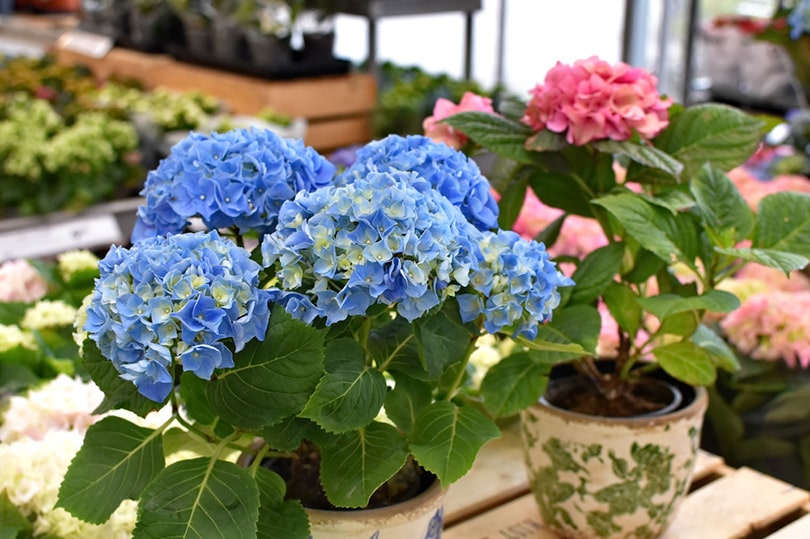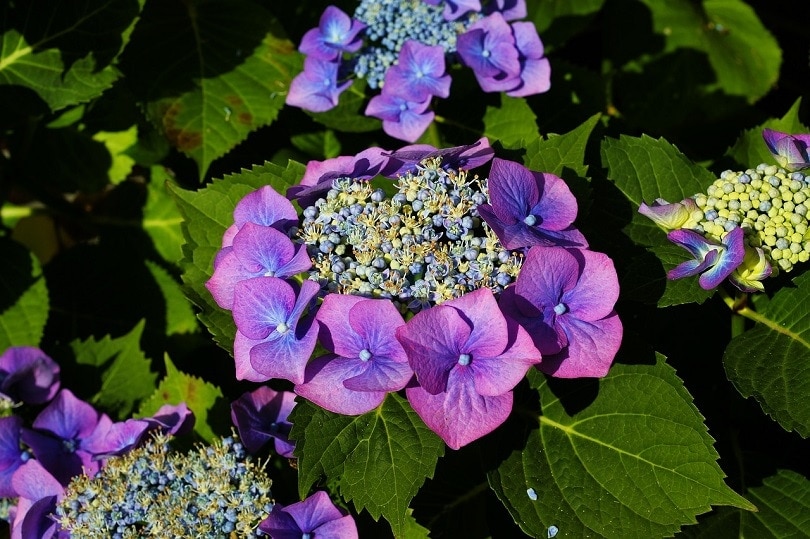Can Hydrangeas Grow In Shade? Facts, Species & Climates
-
Pete Ortiz
- Last updated:

Hydrangea bushes are prized for a number of reasons. They’re beautiful with gorgeous leaves and stunning blooms. They are also hardy and relatively low maintenance. They’re able to withstand drought conditions and irregular irrigation for periods of time during the year. All of these things make hydrangeas a popular choice for many gardens across the country. While hydrangeas are somewhat drought resistant, are they shade resistant? Can hydrangeas grow in the shade?
Like many things in gardening, the shade tolerance of hydrangeas can depend on a few different factors. In many cases, hydrangeas do not like shade and prefer full sun whenever possible. However, some hydrangeas will do okay in partial shade, especially in southern climates where the days are long and hot.
Full Sun vs. Light Shade vs. Partial Sun
Hydrangea’s sun requirements are listed as full. That means that hydrangeas thrive when they receive 6 to 8 hours of direct sunlight per day. Not every spot in a yard will receive direct, full, uninterrupted sun. Shade and shadow appear throughout the day as the sun moves across the sky. It is okay to plant your hydrangeas in an area that gets periodic shading throughout the day as long as they are not completely obscured by a shade-creating object.
Full sun means a minimum of 6 hours of direct sunlight per day. Light shade is an area that receives 5 to 6 hours of direct sunlight per day. Partial sun is an area that receives 4 to 6 hours of sun per day.
Hydrangeas will thrive in full sun, but they can grow in light shade. In southern areas, like states in the American Deep South, some hydrangeas will be happy in areas of partial sun.

Northern vs. Southern Hydrangeas
The shade tolerance of hydrangeas can also depend on how far north or south you live. The farther north you live, the more sunlight a hydrangea will require. Northern planters should always try and put their hydrangeas in the full sun whenever possible. Northern areas receive less direct sunlight during the year compared to southern areas. Northern areas are also cooler and have shorter summers.
People who live in hot southern areas and subtropical climates will have better luck putting their hydrangeas in the shade. In fact, in places with particularly hot summers, hydrangeas will need extra water and attention during the dog days of the season. Putting certain hydrangeas in full sun during a long hot summer will cause them to wilt and brown. In these types of climates, some spots with partial shade can help a hydrangea stay cool during the summer heat.

Different Answers For Different Species
Hydrangeas are not a single species. In fact, there are 23 different species of common hydrangeas and 6 that are primarily found in North America. Different hydrangea species have different shade tolerances. If you are looking to plant hydrangeas in the shade, there are some species that will do better than others.
There are two species of hydrangea that will do exceptionally well in areas with partial sun or shade. The oakleaf hydrangea is one of the most shade-tolerant species of hydrangea. They will still produce large blooms even if grown in a shady area. Another great species to consider for shady areas is the climbing hydrangea. Climbing hydrangeas are vines, not bushes, and they like to climb up rough walls and archways. These flowering vines do very well in the shade compared to the typical hydrangea bush.
Conclusion
For the safest results possible, it is always good to plant your hydrangeas in areas that receive full sun. Full sun constitutes 6 to 8 hours of sunlight per day. Some areas that are particularly hot and steamy will have better luck with shaded hydrangeas. There are also certain species of hydrangea that are not as common but are much more shade tolerant than other hydrangeas. With a little bit of research and persistence, you can find the perfect balance of sun and shade for your particular hydrangea plant.
Featured Image Credit: ChiemSeherin, Pixabay
Contents



